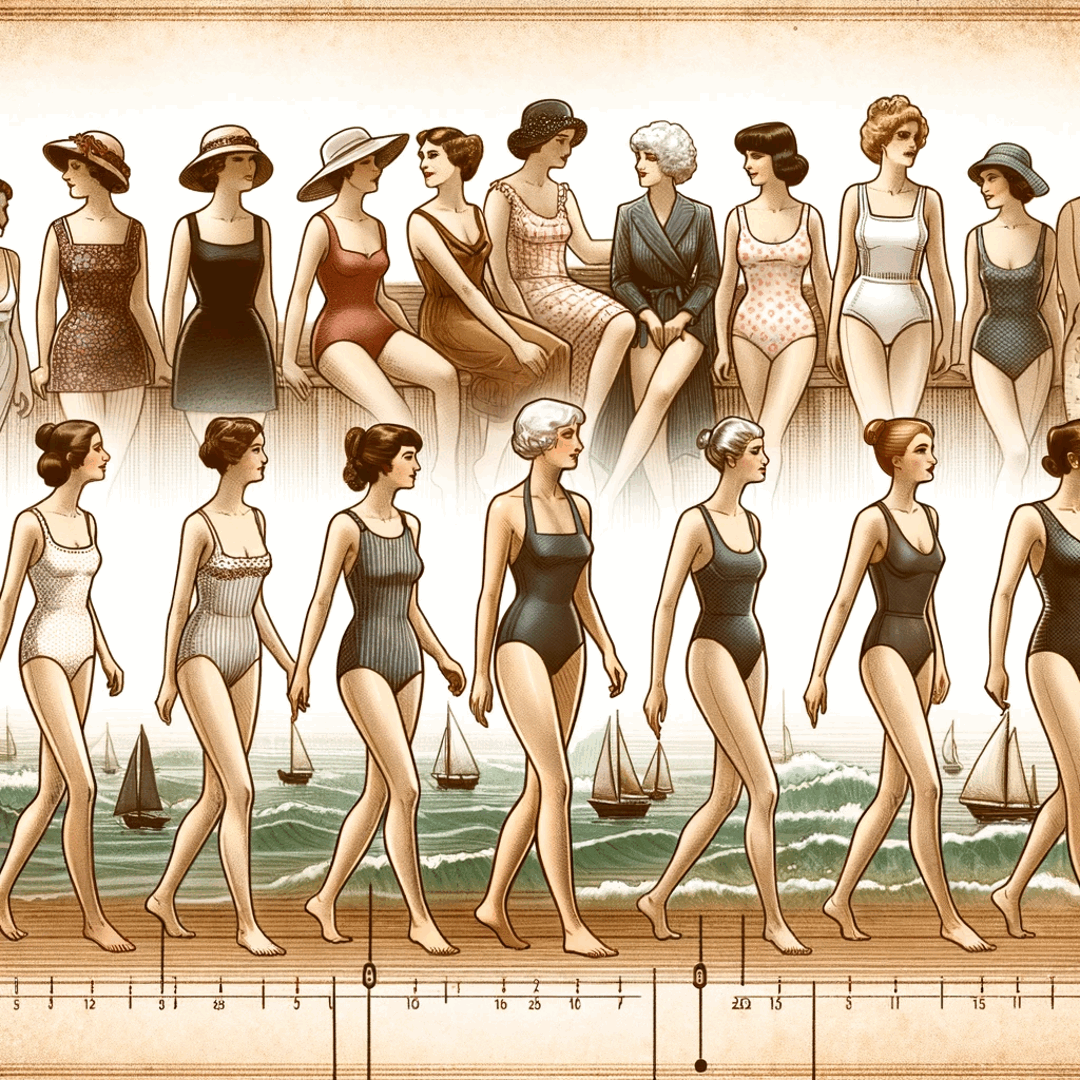A brief history of the evolution of women’s swimwear
The different types of swimsuits
There are various types of swimwear for women, namely a one-piece swimsuit, bikini, halter, bandeau and tankini, amongst others. At the beginning of the 19th century when swimming began to be recognized as a recreational activity, women used to wear loose swimsuits made of wool or flannel. Since then, material innovations coupled with women’s freedom and acceptance of different body types have greatly changed the appearance of swimsuits today.
And now a little fact from swimwear history.
Bikinis were first shown to the public on July 5, 1946 by a dancer from the Casino de Paris, Micheline Bernardini. The new swimsuit model was named after the Bikini Atoll, where the United States conducted nuclear tests four days earlier. At that time, Louis Reard competed with another designer, Jacques Heim.
In general, July 5, 1946 is the official date of the bathing revolution, when fashion designer Louis Reard first introduced the public to a swimsuit that opens the stomach. He called his invention the biting word bikini, in honor of the island in the Pacific Ocean over which the Americans conducted nuclear tests.
Arrival of bikini and low-cut
In the early 1960’s, women’s swimwear were still quite conservative but major changes took place around the mid 60’s when the bikini and low-cut swimsuits were introduced. The fashion designer Rudi Gernreich created the first monokini in 1964. It was first topless swimsuit for women and there was a lot of controversy surrounding this topless suit. Peggy Moffitt, who was the first model in USA to be pictured in this swimwear even received death threats.
In the 1970’s, swimwear known as the skinsuit became very popular, both for men and women. Skinsuits were made with new synthetic materials and they were commonly used during sports events, such as the 1972 Olympics and the 1973 World Aquatics Championships. In fact, at the 1973 World Aquatics Championships, women in East Germany wearing skinsuits set 7 world records by winning 10 out of the 14 swimming events. Following these 2 events, the skinsuit was adopted as a standard competitive swimwear.
Bright neon colors and animal prints
Women’s swimsuits in the 1980’s were daring in terms of aesthetics. They were colourful with lots of patterns. It was very fashionable for women to wear swimsuits of bright neon colours and animal prints during this era. The commonly used women’s swimwear in the 80’s included thong-style swimsuits and low necklines with high leg cuts.
The influence of Baywatch serial
In the 1990’s, many women’s swimsuits were inspired from the popular TV show Baywatch. One- piece swimsuits featuring high-cut legs and tank-top necklines became very trendy. Major innovations also took place for the tankini and it became very popular as it took into account women’s anxieties about wearing swimsuits. The tankini, created by the designer Anne Cole, consists of a bikini bottom and a tank-top, typically made with Lycra and nylon or spandex and cotton, providing the modesty of a one-piece swimsuit and the convenience of a two-piece swimsuit.
Tankinis and fast skin swimsuits
Tankinis were still very popular in the 2000’s. The fast skin swimsuit was also created in 2000. Fast skin swimsuits came in 4 different styles for women, namely the Body, Knee, Open Back and Hydra. Fast skin swimsuits were made from Lycra coated with Teflon which allowed a reduction in water resistance. In 2004, Aheda Zanetti created the burkini which serves as a modesty swimwear for women. The burkini also protects women from the sun as it provides full body coverage, except for the hands, feet and the face.
During the 2010’s, some of the most popular women’s swimwear included both vintage-inspired styles and bolder styles. Women’s swimsuits became inclusive and varied in styles, with strapless bikinis and cut-out bathing suits becoming trendy. In 2017, an iconic moment was made in the swimwear industry when the American model Hunter McGrady became the curviest model to feature in the Swimsuit Issue of Sports Illustrated. She designed her own swimwear as she was not able to find any trendy swimwear in her size.
Current state of womens swimsuits
In 2024, a large collection of women’s swimwear are available. Women have the option to cover up if they prefer to do so, either for religious purposes or personal choices, and they are free to wear more revealing swimsuits, without society ostracizing them.
The women’s swimwear industry has evolved a lot since the 1960’s. Over the years, women’s swimwear has changed from modest to bold, with both categories still being widely used. Technological advances in materials also made it possible to create skinsuits or fast skin suits which have low water resistance. Nowadays, women can choose from modest swimsuits such as the burkini or the full body suit to daring styles such as strapless bikinis. With the rise in the popularity of plus- size models, women are now embracing swimwear with confidence.
Frequently Asked Questions
- How have cultural attitudes influenced women's swimwear designs over time?
- Women's swimwear designs have been greatly influenced by shifting cultural attitudes towards modesty, femininity, and body image. Over the decades, as societal norms evolved, swimwear designs transitioned from full-coverage garments to more revealing styles, reflecting the growing acceptance and celebration of the female form.

